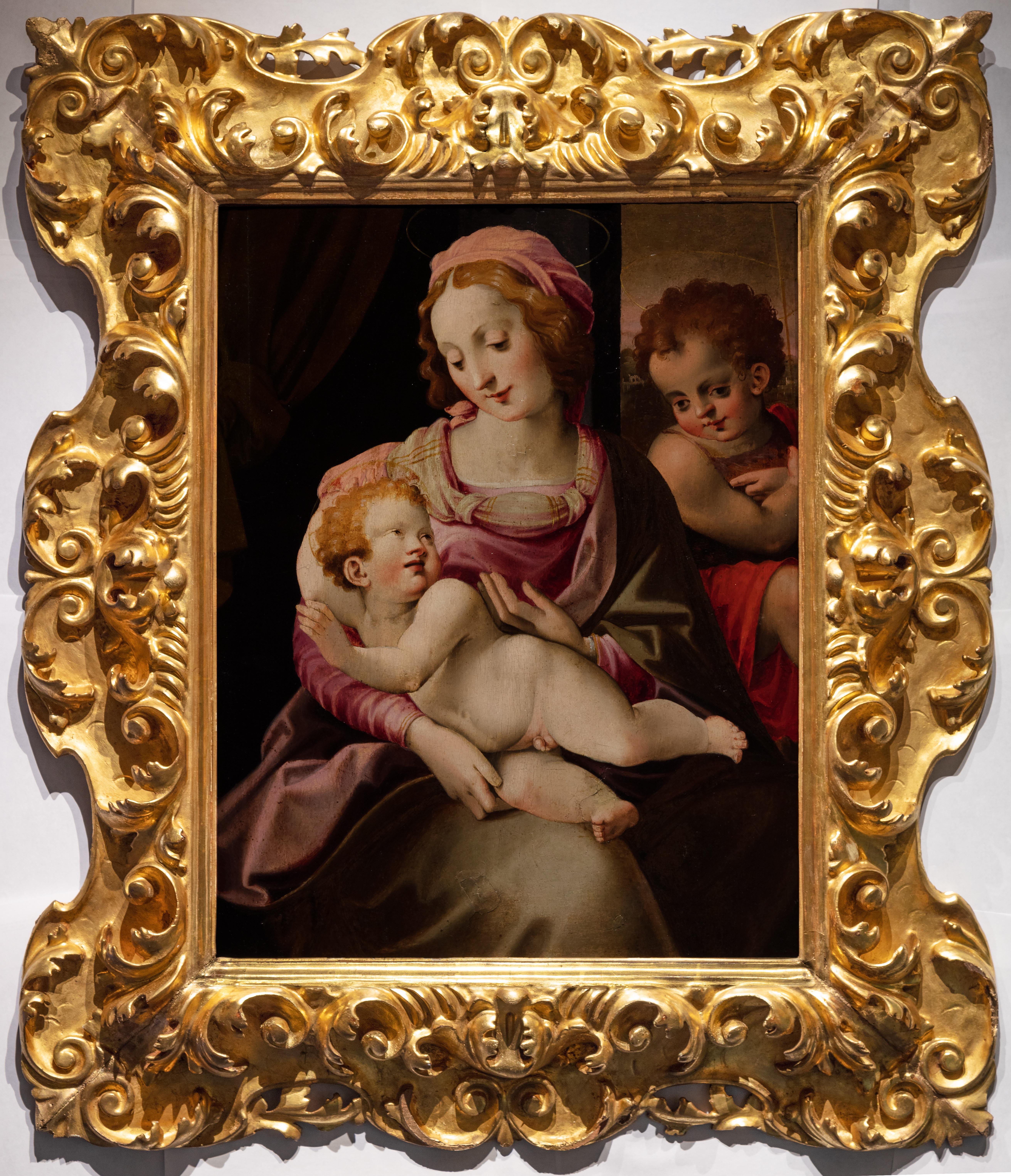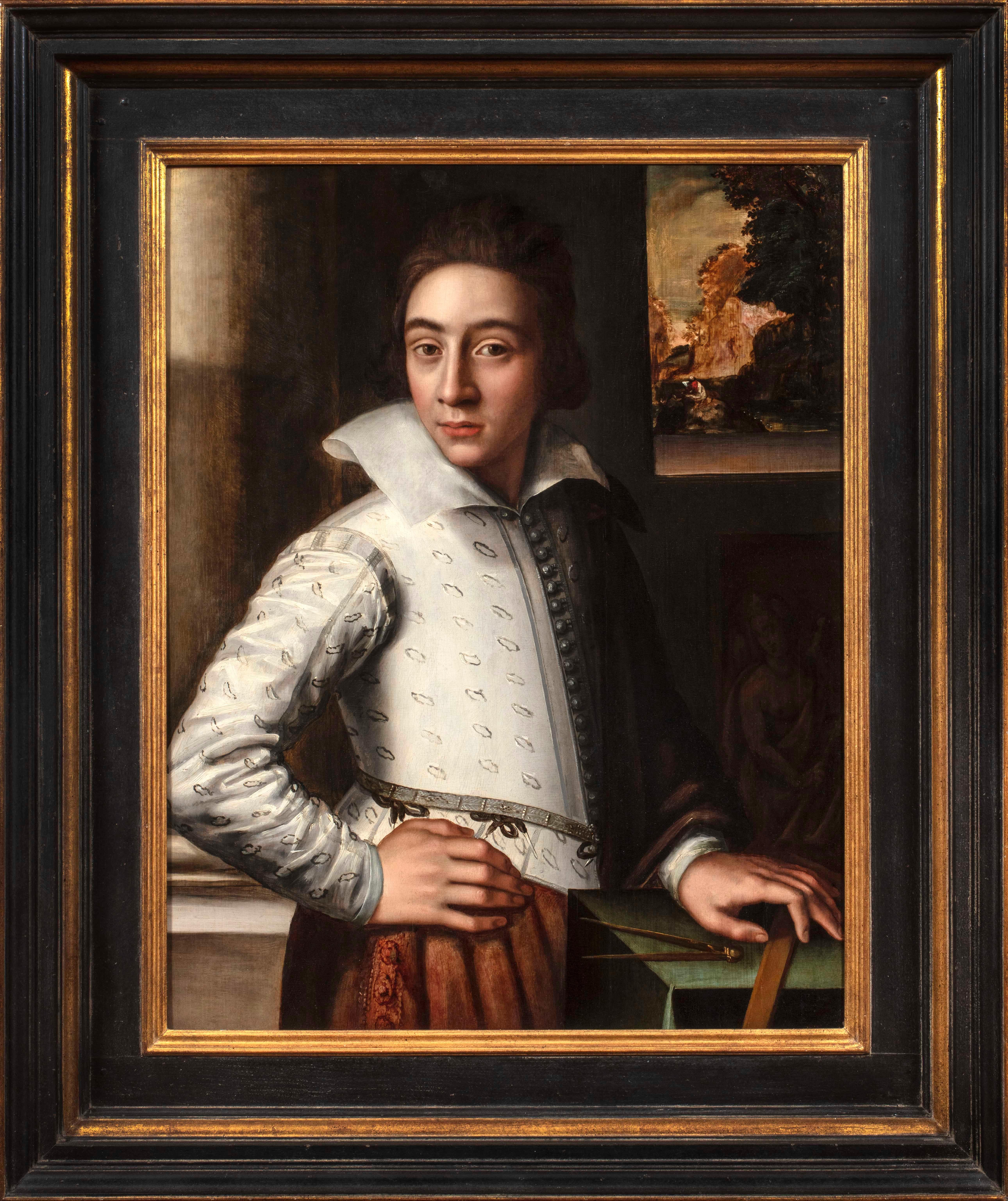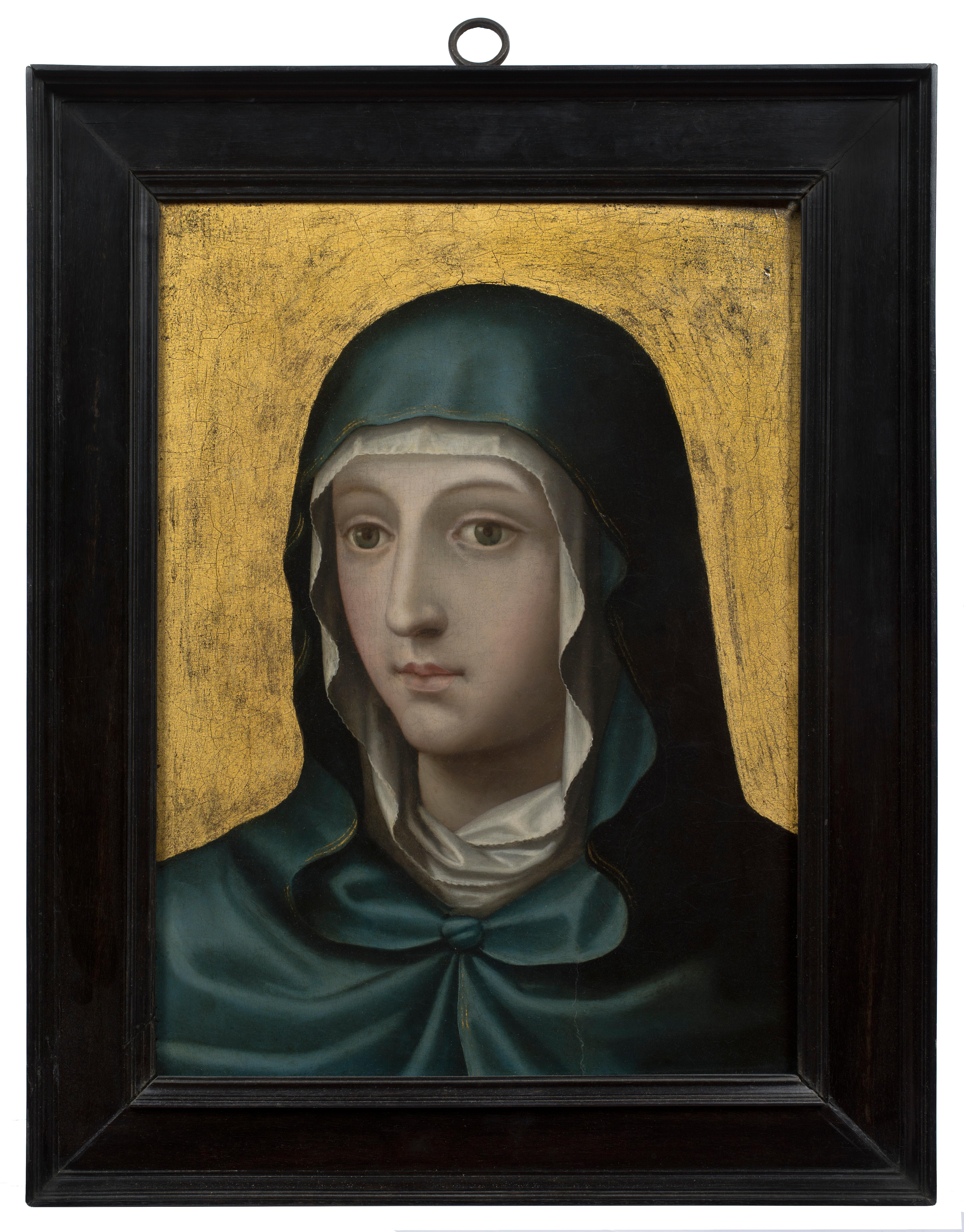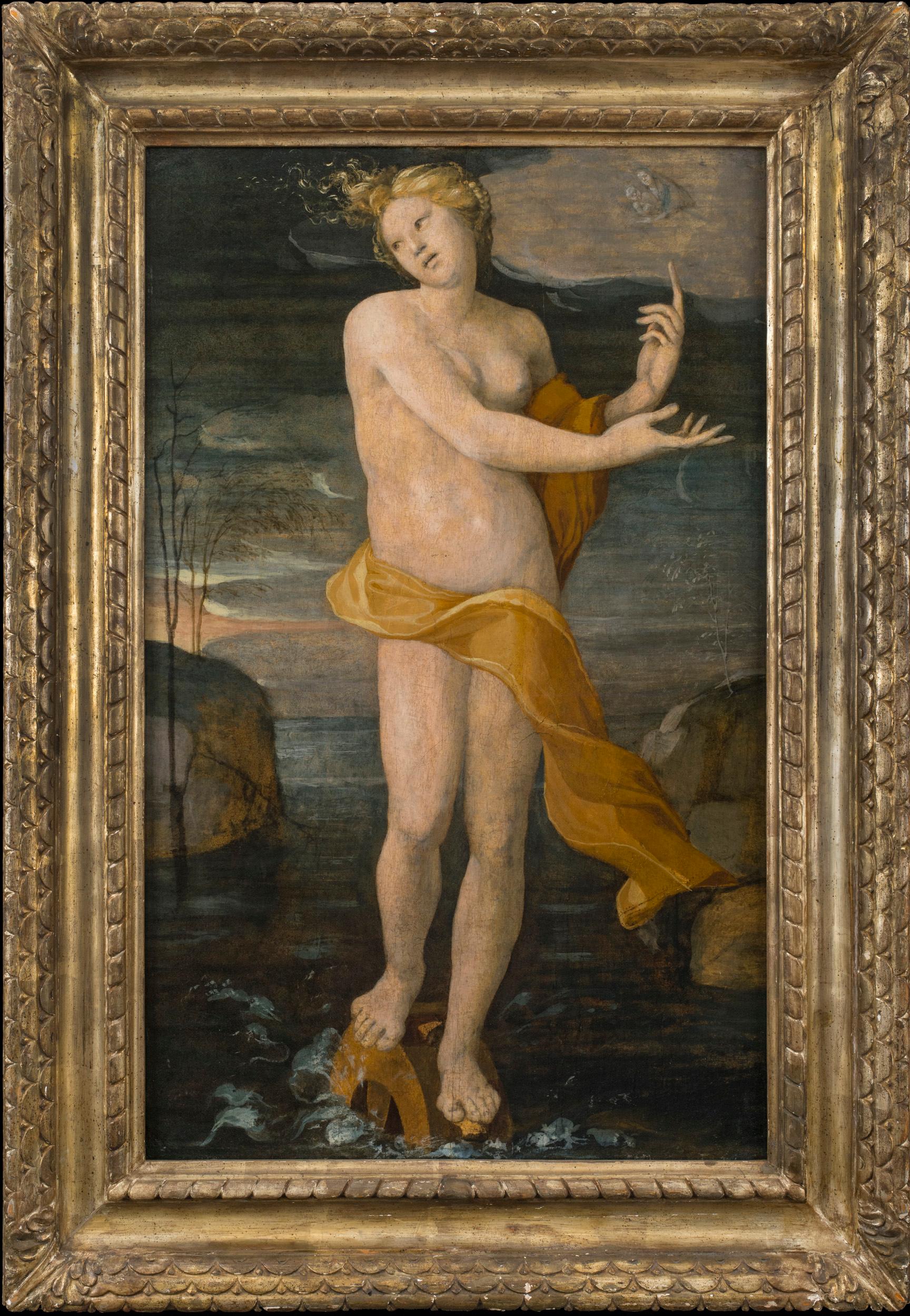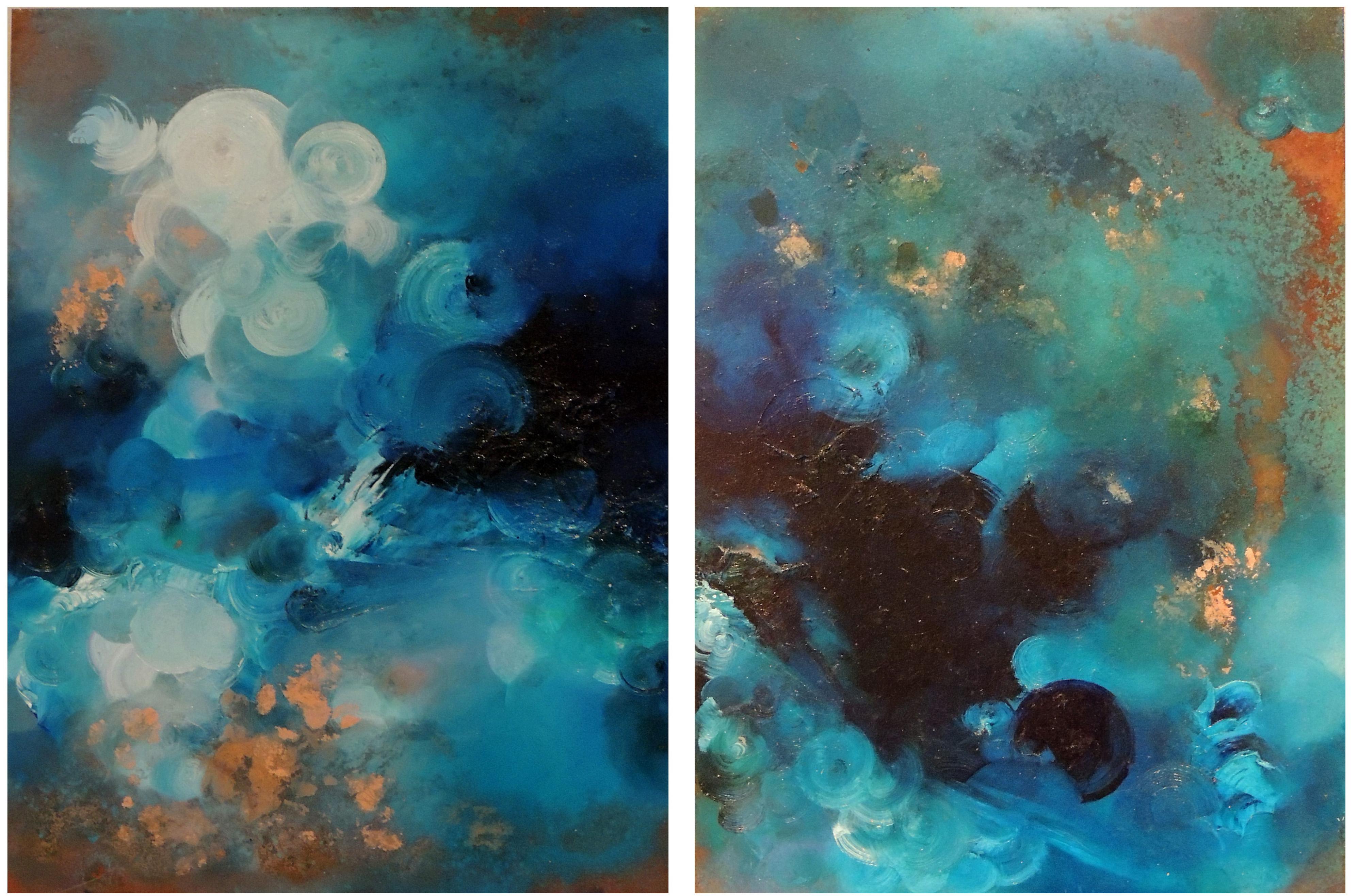Items Similar to Soft Spot
Want more images or videos?
Request additional images or videos from the seller
1 of 6
Karen WoodsSoft Spot
About the Item
Represented by George Billis Gallery, NYC & LA -- “For some time now I have chronicled my journey by painting what I experience while driving around the city. I paint—in the realist tradition—from photographs taken at intersections and on the road, when I’ve been struck by the beauty in the ordinariness of my commute. These images are the “lyrical suggestions” that compel me to paint, to communicate these transcendent experiences so clearly that others might in turn recognize this beauty in the course of their day.
For myself, the reward lies in capturing and expanding the space, time, and movement of a moment in everyday life, and to reveal its accompanying emotional weight: its anticipation, reflection, isolation, longing, and transcendence.”
Colors: Black, Yellow, Blue
Notes: Cars, New York City, Rain, Realistic, Window, Night, Taxi
- Creator:
- Dimensions:Height: 11 in (27.94 cm)Width: 15.25 in (38.74 cm)
- Medium:
- Period:
- Condition:
- Gallery Location:Fairfield, CT
- Reference Number:1stDibs: LU1832844213
About the Seller
5.0
Vetted Seller
These experienced sellers undergo a comprehensive evaluation by our team of in-house experts.
Established in 1996
1stDibs seller since 2015
236 sales on 1stDibs
Typical response time: 1 hour
- ShippingRetrieving quote...Ships From: Fairfield, CT
- Return PolicyThis item cannot be returned.
More From This SellerView All
- DevotionLocated in Fairfield, CTRepresented by George Billis Gallery. The bold flowers and repeating geometric patterns in this series of paintings are lushly modeled in oil paint, and are coupled with the use of i...Category
2010s Realist Landscape Paintings
MaterialsOil, Panel
- At Sunset (Part 5)By Francis DiFronzoLocated in Fairfield, CTBorn in San Pedro, California in 1969, Francis DiFronzo has been painting and exhibiting his artwork in the United States for more than thirty years. "I discovered at a young age that art had the ability to transport me out of my world and into the lives of artists I admired. When I looked at paintings by Andrew Wyeth or Edward Hopper, I felt as though I was momentarily living in the worlds they created. I wanted to do the same thing. I wanted my work to have that power." After receiving his B.F.A in 1994 from California State University, Fullerton, DiFronzo moved to Philadelphia, PA where he continued his studies in drawing and painting at the Pennsylvania Academy of the Fine Arts. There he worked and learned under the guidance of artists Murray Dessner, Jan Baltzell, Sidney Goodman, Vincent Desiderio and Irving Petlin. Di Fronzo...Category
2010s American Realist Landscape Paintings
MaterialsOil, Watercolor, Gouache, Wood Panel
- Endless SummerBy Francis DiFronzoLocated in Fairfield, CTBorn in San Pedro, California in 1969, Francis DiFronzo has been painting and exhibiting his artwork in the United States for more than thirty years. "I discovered at a young age that art had the ability to transport me out of my world and into the lives of artists I admired. When I looked at paintings by Andrew Wyeth or Edward Hopper, I felt as though I was momentarily living in the worlds they created. I wanted to do the same thing. I wanted my work to have that power." After receiving his B.F.A in 1994 from California State University, Fullerton, DiFronzo moved to Philadelphia, PA where he continued his studies in drawing and painting at the Pennsylvania Academy of the Fine Arts. There he worked and learned under the guidance of artists Murray Dessner, Jan Baltzell, Sidney Goodman, Vincent Desiderio and Irving Petlin. Di Fronzo...Category
2010s American Realist Landscape Paintings
MaterialsOil, Watercolor, Gouache, Wood Panel
- Wispy DayBy Stephanie ReiterLocated in Fairfield, CTGeorge Billis Gallery presents Stephanie Reiter. Painting for me is about capturing the light and beauty of the day. Usually a landscape will hit me and say, “paint me”. Then I k...Category
2010s American Impressionist Landscape Paintings
MaterialsOil, Panel
- Gray MattersBy Stephanie ReiterLocated in Fairfield, CTGeorge Billis Gallery presents Stephanie Reiter. Painting for me is about capturing the light and beauty of the day. Usually a landscape will hit me and say, “paint me”. Then I k...Category
2010s American Impressionist Landscape Paintings
MaterialsOil, Panel
- Fly ByBy Stephanie ReiterLocated in Fairfield, CTGeorge Billis Gallery presents Stephanie Reiter. Painting for me is about capturing the light and beauty of the day. Usually a landscape will hit me and say, “paint me”. Then I k...Category
2010s Realist Landscape Paintings
MaterialsOil, Panel
You May Also Like
- Portrait of a ManLocated in New York, NYProvenance: with Leo Blumenreich and Julius Böhler, Munich, 1924 Dr. Frederic Goldstein Oppenheimer (1881-1963), San Antonio, Texas; by whom given to: Abraham M. Adler, New York, un...Category
16th Century Old Masters Portrait Paintings
MaterialsOil, Panel
- Madonna and Child with the Infant Saint John the BaptistLocated in New York, NYInscribed, reverse: Fr Brina Provenance: Private Collection, New Jersey. Francesco Brina was one of the “Studiolo” painters, responsible for the panel of Neptune and Amphitrite in F...Category
16th Century Old Masters Paintings
MaterialsOil, Wood Panel
- Portrait of an Artist (possibly a Self-Portrait)Located in New York, NYProvenance: Bradley Collection. Private Collection, Upperville, Virginia. Literature: Katlijne van der Stighelen and Hans Vlieghe, Rubens: Portraits of Unidentified and Newly Identified Sitters painted in Antwerp, Corpus Rubenianum Ludwig Burchard, vol. 19, pt. 3, London and Turnhout, 2021, under cat. no. 189, p. 161, and fig. 75. This painting had previously been considered to be by an anonymous Tuscan painter of the sixteenth century in the orbit of Agnolo Bronzino. While the painting does in fact demonstrate a striking formal and compositional similarity to Bronzino’s portraits—compare the nearly identical pose of Bronzino’s Portrait of a Young Man in the Metropolitan Museum of Art (Fig. 1)—its style is completely foreign to Italian works of the period. That it is painted on an oak panel is further indication of its non-Italian origin. This portrait can in fact be confidently attributed to the Antwerp artist Huybrecht Beuckelaer. Huybrecht, the brother of Joachim Beuckelaer, has only recently been identified as the author of a distinct body of work formerly grouped under the name of the “Monogrammist HB.” In recent studies by Kreidl, Wolters, and Bruyn his remarkable career has been delineated: from its beginnings with Joachim in the workshop of Pieter Aertsen; to his evident travels to Italy where, it has been suggested, he came into contact with Bronzino’s paintings; to his return to Antwerp, where he seems to have assisted Anthonis Mor in painting costume in portraits; to his independent work in Antwerp (where he entered the Guild of Saint Luke in 1579); and, later to his career in England where, known as “Master Hubberd,” he was patronized by the Earl of Leicester. Our painting was recently published by Dr. Katlijne van der Stighelen and Dr. Hans Vlieghe in a volume of the Corpus Rubenianum, in which they write that the painting “has a very Italian air about it and fits convincingly within [Beuckelaer’s] oeuvre.” Stighelen and Vlieghe compare the painting with Peter Paul Ruben’s early Portrait of a Man, Possibly an Architect or Geographer in the Metropolitan Museum of Art, in which the sitter holds a compass and wears a similarly styled doublet (Fig. 2). Huybrecht both outlived and travelled further afield than his brother Joachim, who made his career primarily in Antwerp. Whereas Joachim was the main artistic inheritor of their uncle and teacher, Pieter Aertson, working in similar style and format as a specialist in large-scale genre and still-life paintings, Huybrecht clearly specialized as a painter of portraits and was greatly influenced by the foreign artists and works he encountered on his travels. His peripatetic life and his distinctly individual hand undoubtedly contributed to the fact his career and artistic output have only recently been rediscovered and reconstructed. His periods abroad seem to have overlapped with the mature phase of his brother Joachim’s career, who enrolled in the Antwerp Guild of Saint Luke much earlier than his brother, establishing himself as an independent painter in 1560. Joachim’s activity was confined to the following decade and half, and his latest work dates from the last year of his life, 1574. Our portrait was likely produced in the late 1560s, a dating supported by the dendrochronological investigation performed by Dr. Peter Klein, which established that it is painted on an oak panel with an earliest felling date of 1558 and with a fabrication date of ca. 1566. This painting presents a portrait of an artist, almost certainly Huybrecht’s self-portrait. The young sitter is confidently posed in a striking patterned white doublet with a wide collar and an abundance of buttons. He stands with his right arm akimbo, his exaggerated hands both a trademark of Huybrecht and his brother Joachim’s art, as well as a possible reference to the “hand of the artist.” The figure peers out of the painting, interacting intimately and directly with the viewer, as we witness him posed in an interior, the tools and results of his craft visible nearby. He holds a square or ruler in his left hand, while a drawing compass...Category
16th Century Old Masters Paintings
MaterialsOil, Panel
- The Veronica of the Virgin (Verónica de la Virgen)Located in New York, NYThe panel has been attributed both to Joan de Joanes and his son Vicente Macip Comes (Valencia, ca. 1555 – 1623). Provenance: Private Collection, England, by 1886 (according to stencils on the reverse) Private Collection, New Jersey, until 2010 The Veil of Veronica, often called the Sudarium, is one of the most important and well-known relics of Christ. According to legend, Veronica offered Christ her veil as he carried the cross to his crucifixion. He wiped his face with the veil, which left the cloth miraculously imprinted with his image. Depictions of Christ’s face on a veil, or simply images that focused in on Christ’s face, were treasured objects of religious devotion. The popularity of this format also inspired similar images of the face of the Virgin. The iconographic type of the present painting is known as the Veronica of the Virgin, which was especially favored in late medieval and early Renaissance Spain. Distinct from the images of the suffering Christ, the Veronica of the Virgin is based on the legend that Saint Luke painted a portrait of Mary from life. Although scholars have sometimes mistaken them for portraits of Queen Isabella I of Castile (known as Isabel la Católica) or as a depiction of Saint Maria Toribia (known as María de la Cabeza, or, Mary of the Head), paintings like this one were clearly intended as images of the Virgin in the style of Saint Luke’s lost portrait. The Veronica of the Virgin was especially popular in Valencia, and depictions of this subject produced there all stem back to one visual prototype: a Byzantine image in the city’s cathedral (Fig. 1). This early treatment of the Veronica was given to the cathedral in 1437 by Martin the Humane, King of Aragon and Valencia, who promoted religious veneration of the Veronica of the Virgin as part of the celebration of the Immaculate Conception of Mary. This devotion spread throughout Martin’s kingdom and particularly took hold in Valencia, where the Byzantine image resided. The image, which is displayed in a gold reliquary...Category
16th Century Old Masters Paintings
MaterialsOil, Wood Panel
- Allegory of FortuneLocated in New York, NYProvenance: S. Spinelli Collection, Florence; their sale, Galleria Pesaro, Milan, July 11-14, 1928, lot 112 (unsold); reoffered Galleria Luigi Bellini, Florence, April 23-26, 1934, lot 132, as manner of Baldassare Peruzzi Dr. Giacomo Ancona, Florence, 1930s, and after 1939, San Francisco; thence by descent to his son: Mario Ancona, San Francisco; thence by descent to his children: Mario Ancona III and Victoria Ancona, San Francisco, until 1995; thence to: Phyllis Ancona Green, widow of Mario Ancona, Los Angeles (1995-2012) Literature: Donato Sanminiatelli, Domenico Beccafumi. Milan 1967, p. 170 (under paintings attributed to Beccafumi) Among the precious survivors of Renaissance secular paintings for domestic interiors are several unusual and particularly attractive panels painted in Siena at the end of the fifteenth and beginning of the sixteenth centuries. These paintings depict exemplary figures from antiquity—heroes or heroines, as well as allegorical, literary, and mythological figures. For the most part, these panels have survived in groups of three, although it is possible that some of these works were painted either as part of larger series or as individual projects. One such trio by Beccafumi consists of two paintings now at the National Gallery, London (Marcia and Tanaquil) and a third in the Galleria Doria-Pamphilj, Rome (Cornelia). These were commissioned around 1517–1519 for the bedroom of Francesco di Camillo Petrucci in Siena and were most likely placed together as elements in the wall decoration (spalliere) or installed above the back of a bench or cassapanca. Another, earlier (ca. 1495–1500), set of three—Guidoccio Cozzarelli’s Hippo, Camilla, and Lucretia (Private Collection, Siena) survives with its original wooden framework—a kind of secular triptych. Judith, Sophonisba, and Cleopatra in the collection of the Monte dei Paschi, Siena, are by an anonymous artist close to Beccafumi called the “Master of the Chigi-Saracini Heroines.” Girolamo di Benvenuto’s Cleopatra, Tuccia, and Portia are dispersed (homeless, Prague, Chambery), and Brescianino’s Faith, Hope, and Charity are in the Pinacoteca Nazionale in Siena. The present painting first appeared in the Spinelli sale in Florence in 1934, at which time it was sold with two panels of identical size and format. Each was catalogued as being by the “manner of Baldassare Peruzzi” and of unidentified subject. Of these, the painting depicting a male figure turned to the right has recently reappeared in a private Italian collection, while the location of the third work, portraying a cloaked figure turned three-quarters left, remains unknown. Our panel depicts the allegorical figure of Fortune. Here she is represented in typical fashion as a nude female figure balanced on a wheel (sometimes called the Rota Fortunae), her billowing drapery indicating that she is as changeable as the wind. The appearance of the Virgin and Child in the cloud at the upper right is an unusual addition to the iconography. The subjects of the two pendant male...Category
16th Century Old Masters Paintings
MaterialsOil, Panel
- Alchemy II - Charlotte Aiken, Abstract, transformation, copper, diptych, swirlsBy Charlotte AikenLocated in Knowle Lane, CranleighAlchemy II by British artist Charlotte Aiken. Aiken is a Surrey-based artist, who responds to her surroundings through the medium of paint, working on ...Category
2010s Contemporary Abstract Paintings
MaterialsCopper

